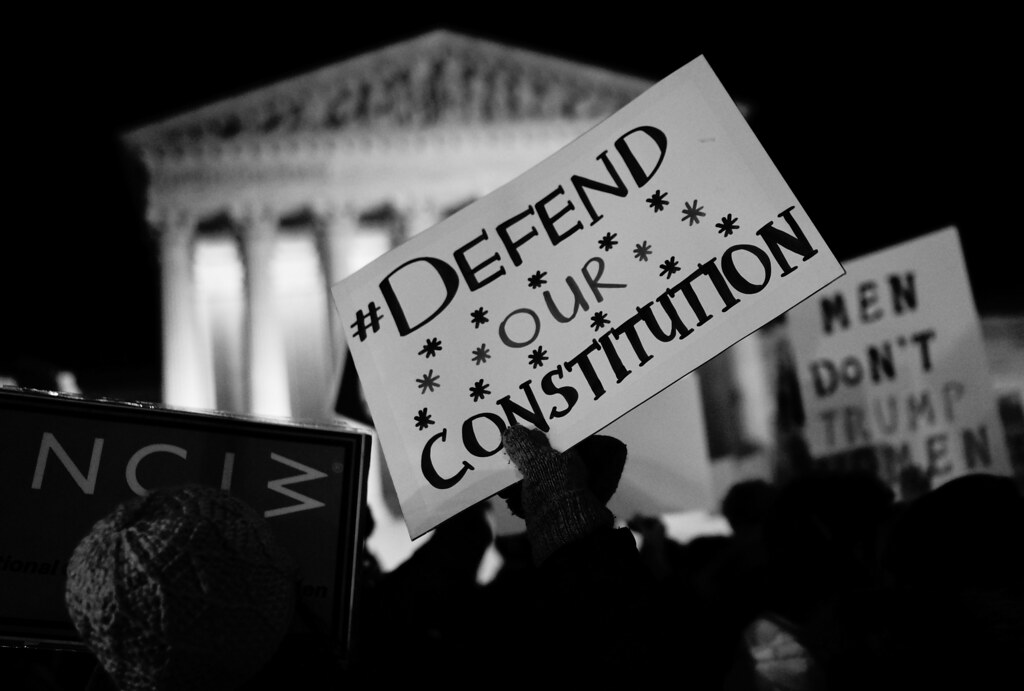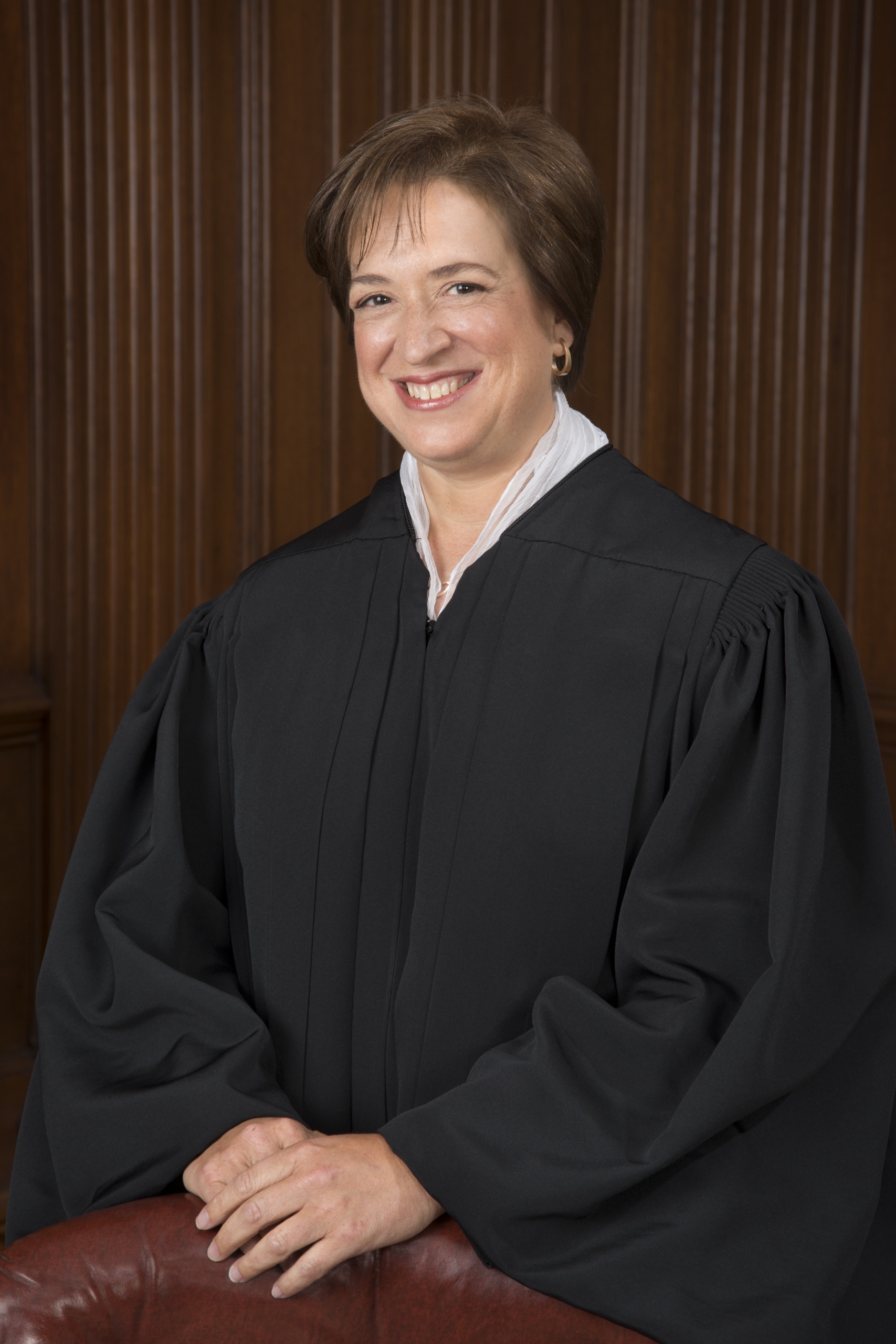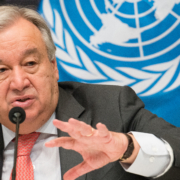West Virginia v. EPA: A Setback for the Steady State Economy
by Sydney Lyman
Throughout the month of June, many Americans frantically refreshed the Supreme Court’s website each morning, as immensely important cases appeared on the docket in rapid succession. It turned out to be a disorienting month. The freedom to get an abortion was stripped from 40 million people of reproductive age, gun control efforts were stymied, and the separation of church and state in public schools was weakened.
In the chaotic wake of these historic rulings, another monumental decision was lost on much of the public. The Court released its decision on West Virginia v. Environmental Protection Agency (EPA) on the afternoon of June 30th, the last day of the annual session. Basically, the Court dropped an environmental bomb and left for vacation.
In its most significant environmental decision yet, the Court ruled 6–3 that Congress had not granted the EPA authority to establish “generation shifting” emissions caps when it passed the Clean Air Act in 1970. Littered with abnormalities, the ruling has already been called a “political act poorly disguised as a legal opinion” devised by the Court’s conservative justices, marking the Court’s swift swing to the right.
Bizarre from the Beginning

U.S. citizens protest the recent series of regressive Supreme Court rulings with a simple demand: “Defend Our Constitution.” (CC BY-NC-ND 2.0, vpickering)
The origins of West Virginia v. Environmental Protection Agency (hereafter, West Virginia) can be traced back to the EPA’s 2015 Clean Power Plan proposal. President Obama had made bold promises to act on climate change. So, when he found himself fighting with a deadlocked Congress, Obama turned to the power of the administrative state to get things done.
Obama’s EPA proposed the Clean Power Plan (CPP). The plan included “strong but achievable” goals such as cutting CO2 emissions from electricity generation by 32 percent over the subsequent 15 years. However, the CPP, initially thought to be one of Obama’s greatest achievements in office, never took effect. As soon as the rules were published in the Federal Register, 28 states and hundreds of companies filed suit in the DC Circuit Court, giving birth to West Virginia. In response, the Supreme Court ordered the EPA to halt enforcement of the law until a lower court ruled on the case; the first time the Court had intervened with regulations before a lower court could conduct its own review.
The plaintiffs issued three main challenges. First, they argued that the EPA couldn’t regulate CO2 using § 7411(d) of the Clean Air Act, because the House and Senate versions of § 7411(d) were never reconciled in the 1990 amendments. In fact, both versions had been codified. The Senate version covered CO2 emissions while the House version did not. In developing the CPP, the EPA followed the Senate’s version of § 7411(d), with the understanding that courts generally defer to an agency’s interpretation of the law pursuant to the principle of judicial deference. However, the plaintiffs claimed that the House version was more consistent with the law overall and should thus prevail.
The second challenge was that the EPA had overstepped its authority by mandating actions “outside the fenceline.” The EPA does have full authority to create standards to be met at each individual plant. However, the CPP’s requirement that states develop clean energy sources and increase efficiency of coal plants couldn’t be fulfilled at the actual power plants themselves. Such a requirement, then, was outside the fenceline.
Lastly, the plaintiffs claimed the CPP violated the Tenth Amendment by inappropriately delegating federal power to the states.
While the DC Circuit Court considered the plaintiff’s arguments in September 2016, the inauguration of Donald Trump and subsequent reorganization of the EPA four months later rendered the case moot. Trump’s EPA clearly stated its intent to repeal the CPP and did so in August 2018, replacing it with the Affordable Clean Energy (ACE) rule.
Compared to the CPP’s 32 percent target, the ACE established a far less ambitious target of between 0.7 and 1.5 percent reduction of CO2 emissions. In turn, the American Lung Association and the American Public Health Association filed suit against the EPA, arguing that it was neglecting its duty to reduce emissions and improve public health. The Court ruled 2–1 in favor of the plaintiffs on January 19, 2021, vacating the ACE rule and allowing the EPA the opportunity to reinstate the CPP rule.
The very next day, President Joe Biden took office and the fear felt by industrial red states was reignited. Nineteen attorneys general and five power companies petitioned the Supreme Court to review the DC Circuit Court’s ruling before the Biden administration had even reinstated the CPP. The Supreme Court’s decision to hear the case at all, then, is questionable. In her dissenting opinion, Justice Elena Kagan wrote:
The Court’s docket is discretionary, and because no one is now subject to the Clean Power Plan’s terms, there was no reason to reach out to decide this case. The Court today issues what is really an advisory opinion on the proper scope of the new rule EPA is considering. That new rule will be subject anyway to immediate, pre-enforcement judicial review. But this Court could not wait—even to see what the new rule says—to constrain EPA’s efforts to address climate change.
In addressing the hastiness of her colleagues and the fact that the Court had no place in the matter, Justice Kagan waves a red flag about the Court’s political activism, which seems outside a fenceline of its own.
Major Questions About the Major Questions Doctrine
Authoring the majority opinion, Chief Justice Roberts invoked the “major questions doctrine” as the decision’s main justification. He claimed that, because the CPP was so unprecedented and transformative, the Court had a “reason to hesitate” before confirming that Congress actually intended (via Clean Air Act) to provide the EPA with the authority to make such drastic changes.

Despite the conservative majority, Justice Kagan holds fast to precedent. (CC BY-SA 3.0, Steve Petteway)
In the end, the Court did far more than hesitate. The majority held that Congress didn’t intend for the EPA to attain such authority, preventing the CPP and any other similarly comprehensive regulation from becoming law. In essence, the CPP created more change than the Court’s conservative majority was willing to accept, so they ruled it unconstitutional.
The principle of judicial deference is essentially thrown out the window should a case fall under the major questions doctrine. Adding to the confusion, the public doesn’t know if the Court will apply this doctrine in any particular case until the decision and opinion is released.
Now referred to as a “legal theory,” the major questions doctrine is a seldom-used concept stemming from FDA v. Brown & Williamson Tobacco (2000). The FDA Court claimed that, given the “economic and political significance” of the tobacco industry, Congress couldn’t have possibly intended for the FDA to have regulatory jurisdiction over tobacco when it passed the Food, Drug, and Cosmetic Act (FDCA) in 1938. FDA created a dangerous loophole that allows the Court to reject the principle of judicial deference whenever the majority believes a decision might have “vast economic and political significance”—whatever that means.
In her West Virginia dissent, Justice Kagan included a few “major questions” threads in the red flag she wove: “Apparently, there is now a two-step inquiry… The majority claims it is just following precedent, but that is not so. The Court has never even used the term ‘major questions doctrine’ before.”
The major questions doctrine has been described by Progressives as a move toward juristocracy, giving nine unelected judges from the least democratic branch of government the final say on society’s most controversial issues. Perhaps the doctrine should be applied to the Supreme Court itself. After all, overturning a 50-year-old precedent that upheld legal access to abortion would have vast political significance. Perhaps the public, too, has “reason to hesitate” before concluding such a transformative decision is within the Court’s authority.
Consequences Beyond the Courtroom
In April 2021, the Biden administration announced its plan to cut greenhouse gas emissions in half by 2030. The administration was relying on three approaches to accomplish this ambitious task.
The first approach was the development of a national network of electric vehicle chargers and new standards to make EVs more reliable and affordable. The second was the Build Back Better Act, a substantial part of which was dedicated to clean energy and reducing carbon emissions. Thanks to coal-powered Democratic Senator Joe Manchin, however, the bill is stuck in reconciliation and is unlikely to be salvaged in earnest.

Hopes of halving emissions by 2030 fade into the distance as Biden’s strategies get stymied at every turn. (CC BY-NC-SA 2.0, Biden For President)
The final approach included sweeping regulations enacted by the EPA to address smog, cross-border pollution, mercury, and toxic contaminants produced by power plants. These regulations were also intended to compel plants to adopt renewable energy. West Virginia has sent the agency back to the drawing board, leaving only the first of the administration’s approaches in effect.
Stripped of its ability to fully execute its climate action plan, and short of plans to degrow the economy, the White House will likely see its target of halving emissions by 2030 slip further into mathematical impossibility.
Worse yet, the consequences of the decision don’t stop with the EPA and climate action. Richard Revesz, a professor at NYU School of Law, contends that the “court’s pointedly vague invocation of the major questions doctrine casts a long shadow over the future of regulation,” regardless of which agency is doing the regulating.
This poses a significant problem for advancing the steady state economy. West Virginia leaves the USA idling in the depths of neoclassical, pro-growth economics, if not mired in the ancient tar sands of laissez faire. In a steady state economy, regulations would be “part of the landscape,” from tax code changes and banking reforms to restrictions on extractive industries and outright bans of certain practices. West Virginia makes such regulations profoundly more difficult to develop, uphold, and enforce.
With hyperpolarization and constant gridlock in Congress, the executive branch is perhaps the most promising channel for advancing necessary nationwide changes. Combating an unprecedented threat like environmental breakdown will certainly call for an unprecedented transformation of government. Unfortunately, that’s exactly the kind of change the Supreme Court has chosen to undermine.
 Sydney Lyman is a summer 2022 journalism intern at CASSE.
Sydney Lyman is a summer 2022 journalism intern at CASSE.







This is all, of course, profoundly depressing. Since about 2004 I’ve been wondering if the US system of government might not be the best, at a structural level. It seems that a majority of American voters now think that way as well, according to a recent NYTimes poll (https://www.nytimes.com/2022/07/13/us/politics/government-trust-voting-poll.html)
I doubt that change in that area will come soon. So what else can be done?
If there is a glimmer of hope, it is that renewable energy is becoming cheaper than fossil fuels in most parts of the world. It is possible too that Russia’s invasion of Ukraine, and the associated weaponization of natural gas exports, may force Europe to get serious about getting off of fossil fuel. In the very near term, Europe will be grasping at anything that burns to provide power. But the Germans and others have announced they realize renewables solve two problems at once: energy security and carbon reduction. After all, Russia can’t turn off the sun or stop the wind. Assuming Europe kicks its natural gas habit, economies of scale should see to it that renewable technology becomes even cheaper, and hence more attractive to everyone.
On a completely different topic, a while back I exchanged thoughts with a very knowledgeable Canadian consultant on decarbonization, Michael Barnard. He seemed to agree with my prediction that humanity will make it, but the experience of surviving climate change will be similar to World War II. Warnings will be disregarded, disasters will come, there will be a lot of unnecessary suffering and destruction.. but in the long run, humanity will probably get a handle on things.
For young people today, I would say be appalled but not hopeless. As with a world war, in coming decades there will still be episodes of happiness and moments of real joy. It’s just that these happy moments won’t come as effortlessly as before, and will be in the context of a civilization racing to change itself.
Hi Cole,
I completely agree that Europe’s adoption of renewable energy would offer lots of hope for the same large-scale transition in the US. Russia’s invasion has caused immense devastation and sorrow for the people of Ukraine, but a worldwide reconsideration of fossil fuels and commitment to energy security may be a silver lining.
To your second point, I think we are currently in the period that will decide the amount of suffering we’ll witness in the future. If we make meaningful changes now, we may be able to avoid much of it, which is why scientists are acting with such urgency (https://www.smithsonianmag.com/smart-news/scientists-stage-worldwide-climate-protests-after-ipcc-report-180979913/).
I sincerely hope humanity will get a handle on things before it comes to a world war scenario, but your colleague’s metaphor is a great reminder that it may not, literally, be the end of world.
Thank you for taking the time to read and respond!
Thanks for helping unravel this complicated legal quagmire of corrupt judiciary. Thank goodness too that dissenting opinions can still go before the public.
Hi Eric,
I’m also thankful for public dissenting opinions – they reveal so much of the inner workings and relationships of the Court. Thank you for taking the time to read and respond!
Thank you for writing a superb account of how the supreme judicial body of this country has been co-opted recently towards setting and trying to establish precedent congruent with a particular social agenda. I’m not a Supreme Court scholar, but, I do know that this body has been used to help push social agendas deemed ultimately acceptable to everyone. Two liberal ones come to mind: “Brown vs the Board of Education( 1954); the year of my birth and “Roe vs Wade”( 1973). Both progressive; both controversial at the time and as it appears, even today. But, both embodied a view of a social order( an order that I, personally, am in alignment with, by the way) that have divided us and that we must use as a way towards mutual understanding.
That said, I think you’re right: there is “gridlock” and “hyperpolarization” in Congress; but this is primarily because in this country and other countries we are committed to an antagonistic, competitive politics( the very meaning of “party” politics) dedicated to increasing “market share” in political power rather than in a social, co-operative one based on meeting human needs everywhere.
Unfortunately, placing hope and supporting the use of executive agency to make those changes that I agree seem and are necessary it might also send send the message that what we may need is some form of liberal and progressive “dictatorship”; but don’t worry, this is for the good of the planet and everyone.
The real solution(s) as Brian alludes to else where are from the grassroots up and this is going to be difficult to achieve. A Steady State Economy is fundamentally ecological, sustainable and socially equitable because it faces real limitations in how we use natural resources and how we ultimately learn NOT to abuse human beings in the process; our current economy is neither and this is enormous elephant in this room.
Hi Nicholas,
I can understand how giving executive agencies the power to make major changes might appear slightly dictatorial, but I do think it’s more democratic than the Supreme Court, a bench of nine un-elected and somewhat mysterious judges serving lifelong terms, dictating what the executive branch can and cannot do. A good chunk of people, 80% by some accounts (https://environment.princeton.edu/how-climate-change-influenced-voters-in-the-2020-presidential-election/), who voted for Biden did so with climate action at the top of their personal concerns. For the Supreme Court to step in and say he can’t do what the public specifically wants him to do, and for a reason as vague as the major questions doctrine, seems more like the dictatorial element of the situation to me. But, I completely agree with your final point regarding the elephant in the room. The exploitation of people and planet perpetuated by our current economic system is being talked about now more than ever, but it’s still difficult for that discussion to permeate the circles that need to understand it most.
Thank you for taking the time to read and respond!
Hi Sidney,
And, thank you for taking the time to read and respond to what I wrote, a too often rare, but most appreciated and very helpful treat. My writing, alas, needs some good editing.
If what you say( and, I’m not really disputing this) that the Supreme Court of the United States has in fact been co-opted and is acting in the dictatorial way you mention then we are serious trouble and this needs to be acknowledged. That is not at all what this governmental body stands for at ALL!
Thank you again and much regards.
Nice analysis Sidney, thanks. A sad aspect of pro-growth follies is that they can exacerbate collapses. It would not be surprising if the greed and tax cuts for the rich lead to a major economic depression, which would temporarily, or maybe permanently reverse growth. And at some point the pipes pulling up oil and gas will start sucking air (or water actually) and the U.S. will wake up to the fact that Europe and China have cheap energy from renewables while we have shrinking supplies of unaffordable fossil fuels. The transition to a “stationary state of population and capital” (as J.S. Mill put it in 1848) will be more painful than it should have been (but it will happen) and involve what ecologists call “density dependent mortality.” We can only keep telling the truth and hope the lessons eventually sink in.